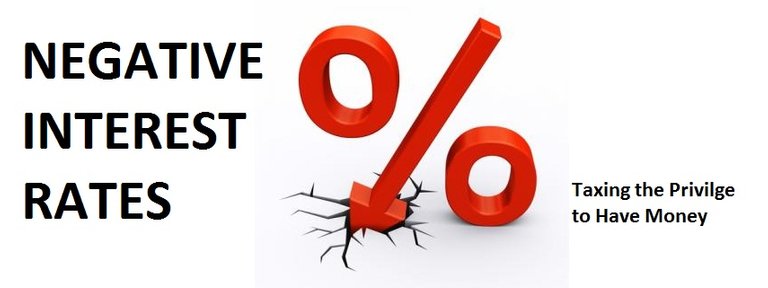
As new debt is issued, this adds to economic activity creating an incentive that can spiral an economy into exponentially increasing debt. Servicing costs are a drag on economic growth and this encourages the lowering of interest rates - which also encourages new debt continuing the spiral.
To manage the debt spiral and keep the economy going (which needs more debt) governments are trying, unsuccessfully to stoke inflation. The target has been low nominal rates, lower than inflation to produce negative real interest rates. Unfortunately, the attempt is proving insufficient as debt is increasing too quickly. To compensate, lowering nominal rates below zero is considered.
What a genius concept!
Let’s consider what it means when nominal interest rates are negative.

Borrowers have obvious incentives – a simple example: borrow $100, repay $99 and keep $1. There is no limit on how much borrowers would like to do that. Through technology, issues around logistics and carrying costs can be reduced to near zero cost. Of course, this facility would not be open to all, otherwise that would be almost immediate chaos and destruction of the financial system. A select few would benefit and this would widen the wealth inequality even more…...revolution?
The lenders are completely the opposite; they lose economic incentives to lend. There may be rules within certain organisations that will compel lending for a while; however, those would be changed or abandoned in time as loans are unsustainable.
The initial dominant factor will be the behaviour of lenders as they chase the thinnest of returns that are better than holding costs. Among the consequences is poorer risk management and economic distortions. The lower cost of money will reduce its value leading to asset inflation and consequently wealth inequality as the super cheap money will be rationed.
Negative rates incentivise firms and individuals to remove funds from banks and other institutions to alternatives including non-return assets such as other currencies and precious metals. This can create a significant liquidity risk which would be countered by more controls…. and so people will flee the system to cryptos etc.
With the value of money decreasing, the demand and value of other forms of capital (including human capital) will also decrease. While the various forms of capital are often considered synergistically, they are also partial substitutes of each other.
As the value of human capital decreases, so do wages, savings and aggregate demand leading to a case for more government spending – especially negative interest debt fuelled spending, letting the government make money from poor fiscal management.
Negative interest rates will accelerate a bad situation to a systemic failure. Bad idea.
Congratulations @robsverdict! You have completed some achievement on Steemit and have been rewarded with new badge(s) :
Click on any badge to view your own Board of Honor on SteemitBoard.
For more information about SteemitBoard, click here
If you no longer want to receive notifications, reply to this comment with the word
STOP@OriginalWorks
To call @OriginalWorks, simply reply to any post with @originalworks or !originalworks in your message!